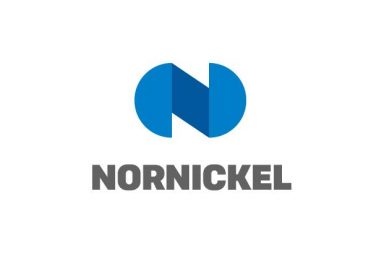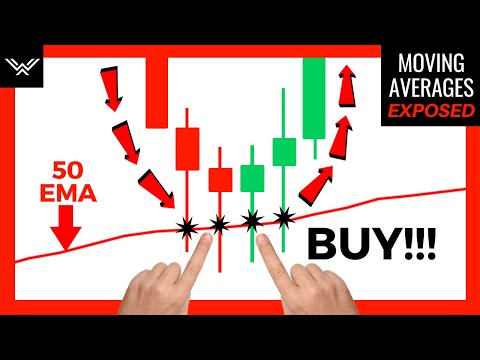Content

These ETFs aren’t categorized by management type (passive or active), but rather by the types of investments held within the ETF. ETFs are bought and sold on a stock exchange – in much the same way as stocks. They perform a similar function to indices, investment trusts and other exchange traded products. You can trade an ETF to track a sector, an index, stocks from a specific country, a commodity, a currency or fixed income markets. Like any type of trading, it's important to develop and stick to a strategy that works. Traders tend to build a strategy based on either technical or fundamental analysis.
For example, in the US, the sponsor files a plan with the Securities and Exchange Commission (SEC). Are you new to the market and looking to have ETF trading explained? In this guide, we look at ETF trading in more detail, explaining how you can start ETFs trading and looking at other important information you may need to know.

ETF trading is the act of speculating on an exchange traded fund, an instrument that tracks a basket of underlying assets – whether that’s shares, commodities or currencies. Similar to a mutual fund, ETFs can provide access to a diversified mix of stocks or bonds in a single investment, but you can trade them like a stock on an exchange. In this article, we share tips to consider when buying and selling ETFs. The U.S. stock market is divided into 11 sectors, and each is made up of companies that operate within that sector. Sector ETFs provide a way to invest in specific companies within those sectors, such as the health care, financial or industrial sectors. These can be especially useful to investors tracking business cycles, as some sectors tend to perform better during expansion periods, others better during contraction periods.
Short selling
On the other end of the spectrum, robo-advisors construct their portfolios out of low-cost ETFs, giving hands-off investors access to these assets. One trend that’s been good for ETF shoppers — many major brokerages dropped their commissions on stock, ETF and options trades to $0. Index exchange traded funds allow investors to gain exposure to an entire stock market index, such as the S&P 500 (US500), the Nasdaq 100 (US Tech 100) or the FTSE 100 (UK100). Index ETFs aim to track the performance of their benchmark index, either by holding the shares of the constituent stocks in the index or other investment products that follow its price movements. An exchange-traded fund (ETF) is a type of pooled investment security that operates much like a mutual fund.
Assets under management (AUM) is the total value of investments held within an ETF. Larger funds often have better liquidity than smaller ones, which means they have lower spreads – saving you money in the long run as you can open your position for less. There are so many different ETFs available, not just in the assets type you can track - stocks, currencies, commodities https://g-markets.net/helpful-articles/ultimate-guide-to-macd/ and so on - but also whether your exposure is leverage, or is long or short. Many ETFs are designed to track the underlying assets, but some funds hand pick the assets they track. For broad-based exposure to UK equities, there are several UCITS ETFs that track the FTSE 100 index, which consists of the 100 largest publicly listed companies in the United Kingdom.
Nearly all ETFs provide diversification benefits relative to an individual stock purchase. Still, some ETFs are highly concentrated—either in the number of different securities they hold or in the weighting of those securities. A fund that concentrates half of its assets in two or three positions may offer less diversification than a fund with fewer total portfolio constituents but broader asset distribution, for example. To bring the ETF’s share price back to its NAV, an AP will buy shares of the ETF on the open market and sell them back to the ETF in return for shares of the underlying stock portfolio.
Factor ETFs focus on specific market drivers, and are often used by institutional investors and active managers. Bond ETFs are more accessible to individual investors, as the bond market can be opaque with a variety of types of bonds, whereas ETFs offer immediate access to a portfolio of bonds. Bond ETFs pay out the interest they receive on the bonds in the portfolio.
How Does an ETF’s Spread Change Over Time?
Learning how to trade ETFs (or Exchange Traded Funds) is quite easy. This page will get you started on your journey to become a master when it comes to ETFs. You can start trading ETFs almost instantly with virtual trading since they trade just like stocks. To help you get started we have pulled together this list of key concepts that will give you a great start on understanding ETF’s in depth. Using your brokerage's trading function, navigate to the particular ETF you'd like to buy and place the trade.

ETFs trade through both online brokers and traditional broker-dealers. You can view some of the top brokers in the industry for ETFs with Investopedia’s list of the best brokers for ETFs. One alternative to standard brokers is a robo-advisor like Betterment and Wealthfront, which make extensive use of ETFs in their investment products. ETFs are available on most online investing platforms, retirement account provider sites, and investing apps like Robinhood.
Trading violations
The two products also have different management structures (typically active for mutual funds, passive for ETFs, though actively managed ETFs do exist). Anyone with internet access can search the price activity for a particular ETF on an exchange. In addition, a fund’s holdings are disclosed each day to the public, whereas that happens monthly or quarterly with mutual funds.
For example, smartphone investing apps enable ETF share purchasing at the tap of a button. This may not be the case for all brokerages, which may ask investors for paperwork or a more complicated situation. Some well-known brokerages, however, offer extensive educational content that helps new investors become familiar with and research ETFs. When the market declines, an inverse ETF increases by a proportionate amount.
- Not investment advice, or a recommendation of any security, strategy, or account type.
- ETFs provide lower average costs because it would be expensive for an investor to buy all the stocks held in an ETF portfolio individually.
- NerdWallet, Inc. does not offer advisory or brokerage services, nor does it recommend or advise investors to buy or sell particular stocks, securities or other investments.
- Similarly, when investors go to sell a mutual fund, the manager will need to raise cash by selling securities, which also can accrue capital gains.
To understand the full liquidity of an ETF, investors must also consider the liquidity of its underlying securities. The price of an ETF share is linked to the price of the underlying assets it holds and can change throughout the day in line with their value. ETF pricing is also influenced by supply and demand because they trade like shares of stocks, so their price will increase if more buyers arise, and drop if more sellers appear. With an active trading account, the next step is to identify the ETFs you wish to trade. Factors to compare include expense ratios, trading volume, holdings, historical performance and current trading prices.
Find the ETFs you want to invest in
These costs need to be weighed against the cost of being exploited by an opportunistic market maker looking to pick off market orders in thinly traded ETFs—an occurrence that is all too common. If you buy ETFs in a standard brokerage account (not an IRA), you should know that they could result in taxable income. Any gains you make from selling an ETF will be taxed according to capital gains tax rules, and any dividends you receive will likely be taxable as well. A share is a portion of a company that can be bought or sold after it has listed on a stock exchange via an initial public offering (IPO).

As a UK investor, you can buy shares in US-listed companies from the UK, but due to local and European regulations, you're not allowed to purchase US-listed exchange-traded funds (ETFs) in the UK. But, there are UK-based ETFs that track U.S. markets, as long as it has the ‘UCITS’ moniker in the name. This means the fund is fully regulated in the UK and allowed to track U.S. investments. Comparing features for ETFs, mutual funds, and stocks can be a challenge in a world of ever-changing broker fees and policies.
Creation/Redemption Process — The Primary Market
This is an important factor to consider when comparing funds that may otherwise be similar in strategy or portfolio content. The ETF space has grown at a tremendous pace in recent years, reaching $4 trillion in invested assets by 2019. The dramatic increase in options available to ETF investors has complicated the process of evaluating which funds may be best for you. Below are a few considerations you may wish to keep in mind when comparing ETFs. The AP then sells these shares back to the ETF sponsor in exchange for individual stock shares that the AP can sell on the open market. As a result, the number of ETF shares is reduced through the process called redemption.
- SSGA Intermediary Business offers a number of products and services designed specifically for various categories of investors.
- ETF shareholders are entitled to a proportion of the profits, such as earned interest or dividends paid, and may get a residual value if the fund is liquidated.
- If the value of the stocks that the ETF is holding in the fund is $100 per share, then the ETF is trading at a discount to its NAV.
Exchange traded funds (ETFs) are baskets of securities that trade intraday like individual stocks on an exchange, and are typically designed to track an underlying index. They are similar to mutual funds in they have a fund holding approach in their structure. That means they have numerous holdings, sort of like a mini-portfolio. Each ETF is usually focused on a specific sector, asset class, or category. ETFs can be used to help diversify your portfolio, or, for the active trader, they can be used to profit from price movements.
If You’re Making a Big Trade, Phone a Friend
AvaTrade offers a range of popular ETFs to trade as CFDs, giving traders the ability to trade long or short with leverage of up to . Some ETFs track the performance of a specific nation’s equity market. Examples are the MSCI Brazil Index Fund, MSCI South Korea Index Fund and others. Examples offered by AvaTrade are the Dow-Jones U.S. Real Estate Index Fund and the Energy Select Sector SPDR. Foreign stocks are widely recommended for building a diverse portfolio, along with U.S. stocks and bonds.
